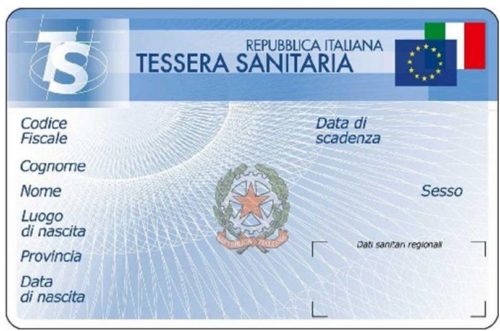What is it?
The Tessera Sanitaria is the Italian health insurance card that residents must show to access the Italian National Health Service or the Servizio Sanitaria Nazionale (SSN). It’s a much cheaper alternative to investing in private health care.
There are two types of Tessera Sanitaria:
- Mandatory
EU citizens with a Codice Fiscale (or Italian tax code) are entitled to the Tessera Sanitaria without paying.
Non-EU citizens who are residing in Italy for work, family, international protection, pregnant women, fostering or adoption are entitled to register without paying.
- Voluntary
People who are staying for more than three months (e.g. students, au pairs) can register voluntarily but they have to pay a yearly lump sum. Students and au pairs who are staying for less than three months can register too.
**Tourists cannot register with the SSN**
Why do you need it?
With the Tessera Sanitaria, you’ll receive:
- low or no-cost treatment
- hospital stays and treatments (including tests, surgeries and medication during hospitalization)
- a General Practitioner
- medical care from specialists (e.g. paediatricians, midwives)
- free or subsidized medication
- ambulance transport
How to Register
Below are the steps that you need to follow to register with the SSN.
Step 1: Find your local ASL office
The ASL (Agenzia sanitaria locale) is the office where you can register to become a member of the SSN.
Find your local ASL online at this site: https://www.doctorsinitaly.com/asl-offices-italy/
Below are some ASL offices in Milan:
- Corso Italia 19
- Viale Andrea Doria 52
- Via Cherasco 7
Below are some ASL offices in Rome:
- Via San Martino della Battaglia 16
- Via Luzzatti 8
- Via Cartagine 85
If you are applying for the voluntary Tessera Sanitaria, you should go to the office and check the exact amount that you have to pay and if there are any specific requirements.
Step 2 (for the Voluntary Tessera only): Pay your annual fee
If you are registering for the voluntary Tessera Sanitaria, you’ll need to pay the annual fee. You can do this at the post office by completing a postal order, or Bollettino Postale. Pay and then keep the receipt as you’ll need to take it to the ASL with you.
Step 3: Bring all your documents to the ASL
For mandatory and voluntary registration, the required documents are slightly different.
If you are applying for mandatory registration, you’ll need to bring:
- Your passport
- Your Codice Fiscale (Italian Tax Code)
- Your Permesso di Soggiorno (if necessary)
- Evidence certifying your address of residence (e.g. a Residency Certificate)
TOP TIP: Take a copy of your work contract and last payslip! They might ask for it.
If you are applying for voluntary registration, you’ll need to bring:
- Your passport
- Your Codice Fiscale (Italian Tax Code)
- Your Permesso di Soggiorno (if necessary)
- Evidence certifying your address of residence (e.g. a Residency Certificate) or Self-declaration of residency or place of abode (the address written on your permit to stay) – you can use this template
- The receipt of payment for the registration to the SSN from the post office (if required)
- If you’re a student or au pair – a document confirming you’re enrolled in school or an au pair contract
Step 4: Choose your GP
During this appointment, you must choose your GP (medico di base). They’ll show you a list of names and addresses but they don’t know who speaks in English so you should research which doctor you want before you arrive.
Step 5: Wait for it to arrive
You’ll receive a receipt that you can use while you’re waiting for your card to arrive. Make sure that you don’t lose it!
Now, you are officially a member of the SSN!
Tips
- Take all the documents you may need
- You should take all the paperwork that you might need with you to prevent any delays. It’s better safe than sorry!
- The earlier the better
- It can get really busy at the ASL offices so you should aim to arrive early to beat the queues.
- Bring things to keep you entertained
- You might be waiting for a while so be sure to bring a book or something else to keep you busy.
- Research which doctor you want
- If you want an English speaking doctor, do some research before you go to the ASL.




 English
English